The Bee Hummingbird is a marvel of nature.
Forget Muhammad Ali’s famous quote “float like a butterfly, sting like a bee”. It should be “hover like a hummingbird, sip nectar like a bee”.
That’s more like it.
Known for their extraordinary small size, dazzling colors, and remarkable abilities, the Bee Hummingbird captivates anyone lucky enough to spot it – both birders and non-birders alike.
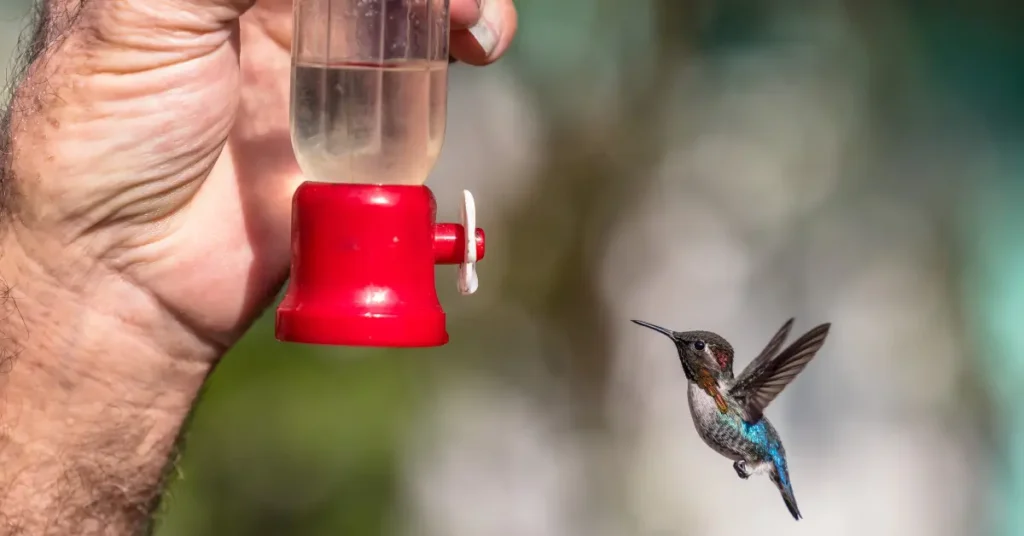
In this article, we’ll be exploring the characteristics of the Bee Hummingbird, while also looking at their nesting behaviors and fascinating facts that make this tiny hummingbird so incredible.
Introduction to the Bee Hummingbird
Native to Cuba and its neighboring island, Isla de la Juventud, the Bee Hummingbird is scarcely bigger than a bumblebee.
But what really is the Bee Hummingbird and what makes it so special?
Widely accepted as the smallest bird on Earth, the Bee Hummingbird measures around 2 inches in length.
As for its weight, the Bee Hummingbird barely comes in at 2 grams – about the weight of a cent.
Bee Hummingbirds are sexually dimorphic, meaning males and females differ in size and appearance.
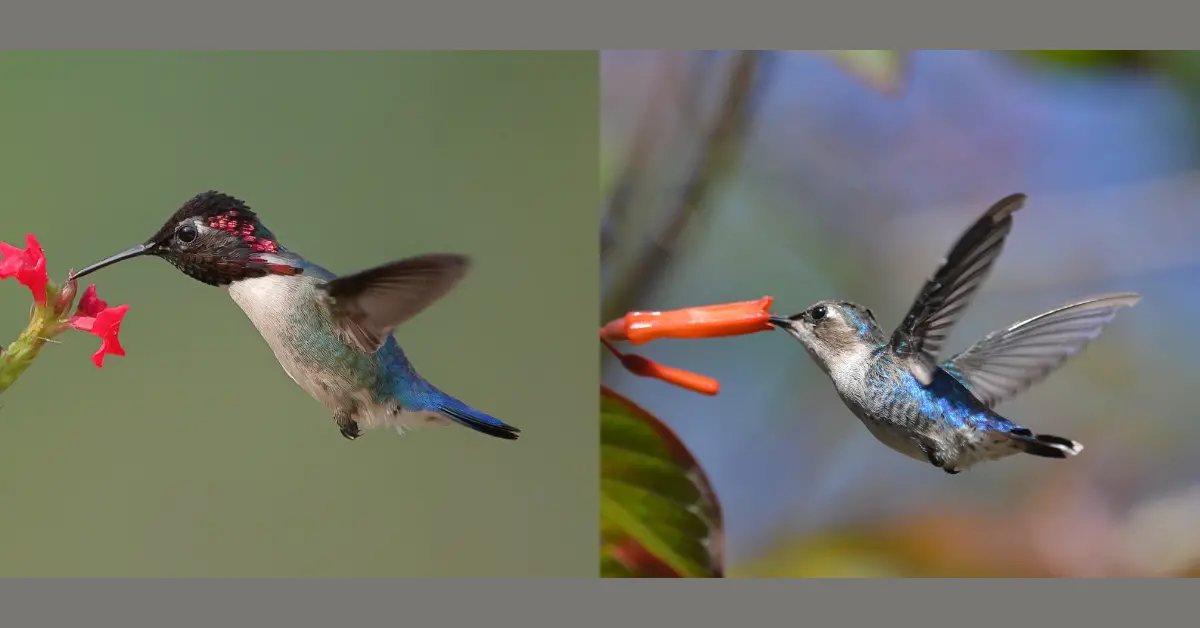
Males are particularly striking with iridescent feathers on their backs and bright ruby-red throats, known as a gorget.
These dazzling colors aren’t from pigments, but rather microscopic structures within the feather itself that are stacked upon one another like pancakes.
These air-filled structures, called melanosomes, reflect and refract light, creating a display of shimmering and shifting colours depending on the angle at which the sun hits.
Females are less colorful, with more subdued green and grayish feathers, and a slightly larger body size than their male counterparts.
Both sexes use color as a form of communication – either through courtship displays or territory warnings.
Flight Abilities
Hummingbirds are a large group of birds belonging to the family Trochilidae. There are thought to be more than 360 distinct species.
All hummingbirds have the amazing capability of being able to fly backwards – the only bird group to do so – and the Bee Bummingbird is no exception.
The wings of a Bee Hummingbird can beat up to 80 times per second.
To put that into perspective, try blinking.
The fastest a person can blink is about five times in one second, though most people cannot achieve this rate voluntarily.
If you think that’s impressive, just wait.
During courtship flights, they can beat their wings up to 200 times per second.
This incredible display of speed and control means the Bee Hummingbird can perform a variety of other airborne tricks no other bird group can do.
They have the ability to hover in place, fly backwards, and make incredibly sharp turns.
To find out how they can do this, we’ll briefly explore some anatomical features of the Bee Hummingbird.
Anatomy of the Bee Hummingbird
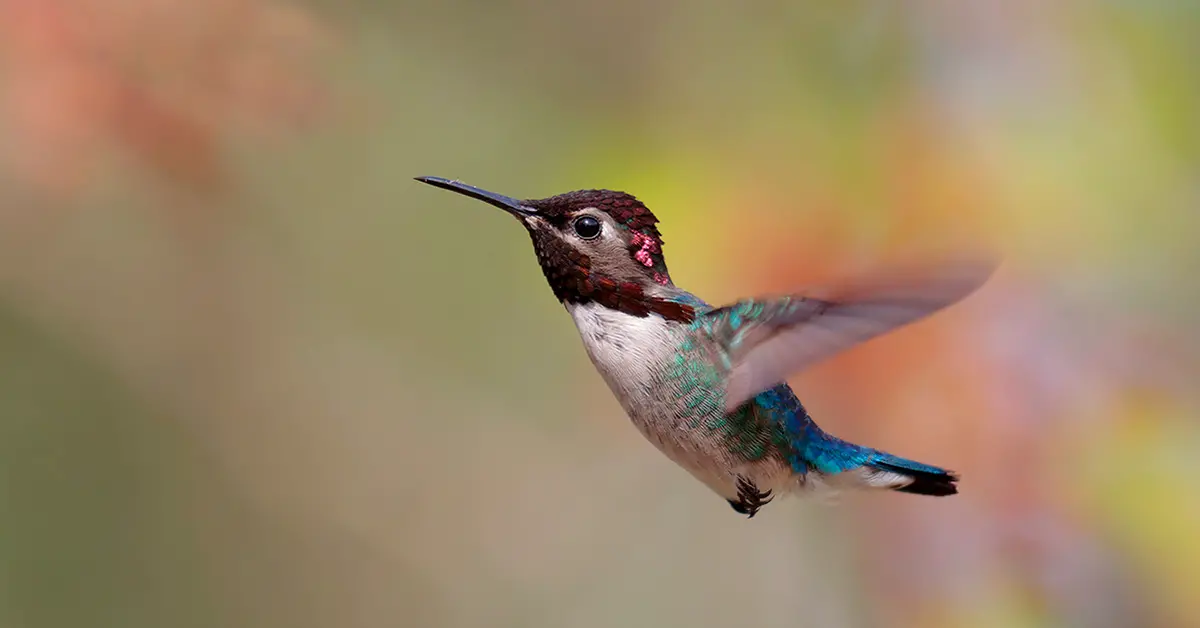
We’re not going to go into too much detail about the anatomy of the Bee Hummingbird – otherwise we’d be here for a very long time.
However, there’s a few key areas I want to discuss. Both of which are pivotal for flight.
Hummingbird Heart
First up, we have the heart of the Bee Hummingbird.
Hummingbirds have one of the largest hearts relative to body size in the entire Animal Kingdom.
Their hearts account for approximately 2.5% of their entire body weight.
Doesn’t sound like much, right?
But let’s put that into perspective.
Despite being 400 pounds, the heart of a blue whale accounts for 1% of its total body weight. A human heart accounts for just 0.3% of total body mass.
There’s a reason as to why the heart of a hummingbird is comparatively heavy.
Their hearts beat up to 1,200 times per minute!
In comparison, a human heart beats on average 80 times per minute (depending on activity levels).
Essentially, the heart of the Bee Hummingbird (and all other hummingbirds) is a highly efficient pump.
A hummingbird heart rapidly supplies the body with constant oxygen and nutrients to keep up with the bird’s extreme energy demands.
Skeleton and Muscles
Skeletal differences in the Bee Hummingbird compared to other birds gives rise to their incredible flight abilities.
Their sternum, or breast bone, is considerably larger than other birds. This increased surface area allows for anchorage of their large pectoral, or breast, muscles.
These pectoral muscles account for about 30% of the Bee Hummingbird’s total body weight.
The wings are attached to the sternum by a tiny and unique ball and socket joint, found only in hummingbirds and their distant cousins, the swifts.
The function of a ball and socket joint, which is common across vertebrates, is to allow for a wide range of motion by allowing bones to move in different directions.
However, Bee Hummingbirds have a unique ball and socket joint in their shoulder, which enables them to move their wings in a fall circle motion.
This motion allows for total rotational movement of the wing, a crucial adaptation for the specialised feeding habits of hummingbirds.
Feeding Habits
The Bee Hummingbird is a nectivore, feeding primarily on nectar from flowers.
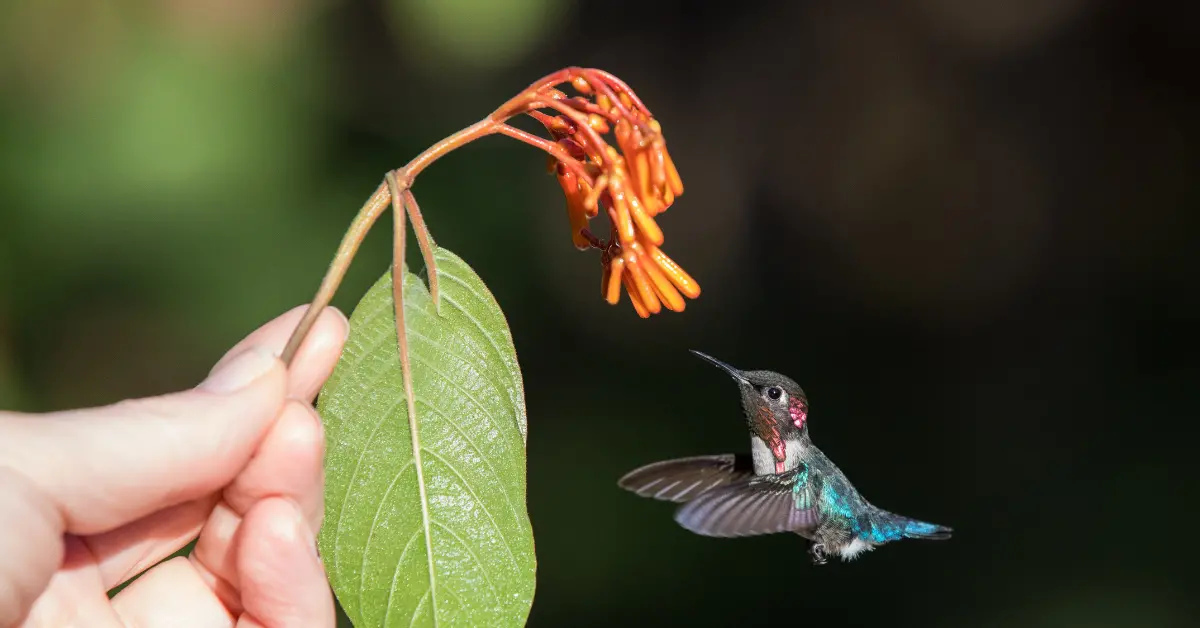
But as we’ve just explored, the Bee Hummingbird has an incredibly fast heartrate and an equally fast wingbeat.
This high-energy lifestyle means the Bee Hummingbird has a high metabolic rate.
A quick biology reminder: the metabolic rate is the amount of energy the body uses to perform all of its functions over a set period.
To fuel such hyperactive flight, Bee Hummingbirds feed frequently throughout the day, visiting hundreds of flowers.
Their metabolism is so high that they consume up to twice their body weight in nectar each day.
Nectar is a high-octane and calorific rich diet that provides energy for hummingbirds. However, Bee Hummingbirds have also been observed supplementing their diet with occasional insect protein.
I love a good comparison, so here’s another: if we humans were to have the same metabolism as a hummingbird, we’d need to consume approximately 155,000 calories per day – just over 600 BigMacs.
But how do they get all this food in the first place?
Well, that’s where that specialized ball and socket joint comes in.
Their tiny, propeller-like wings are able to rotate and flap in a figure-eight motion, generating lift on both the up and down strokes.
As a result, the Bee Hummingbird can hover.
Whilst hovering, they can control movements both forwards and backwards.
Once they find a flower – and their small size means they can obtain nectar from flowers that other birds cannot reach – they use their forked tongue to collect their sugary reward.
Special grooves on their tongue collect and trap nectar, storing and releasing it when the tongue is retracted back into their mouth.
Nesting Behaviors of the Bee Hummingbird
Bee Hummingbirds are polygynous.
This means they do not form pairs (monogamy). Instead, a single male may mate with more than one female during the breeding season.
Breeding occurs between March and June. During this time, males perform aerial displays and sing songs to attract females. The head and throat of the male can also turn shades of orange, red or pink to signal sexual maturity.
Once a pair has copulated, the male will take no further role in parental care.
The female alone constructs the nest.
Using cobwebs, lichen and bark strands, she’ll create a cup-like nest less than an inch in diameter. Here, she’ll lay two eggs. Bee Hummingbird eggs are the size of peas!
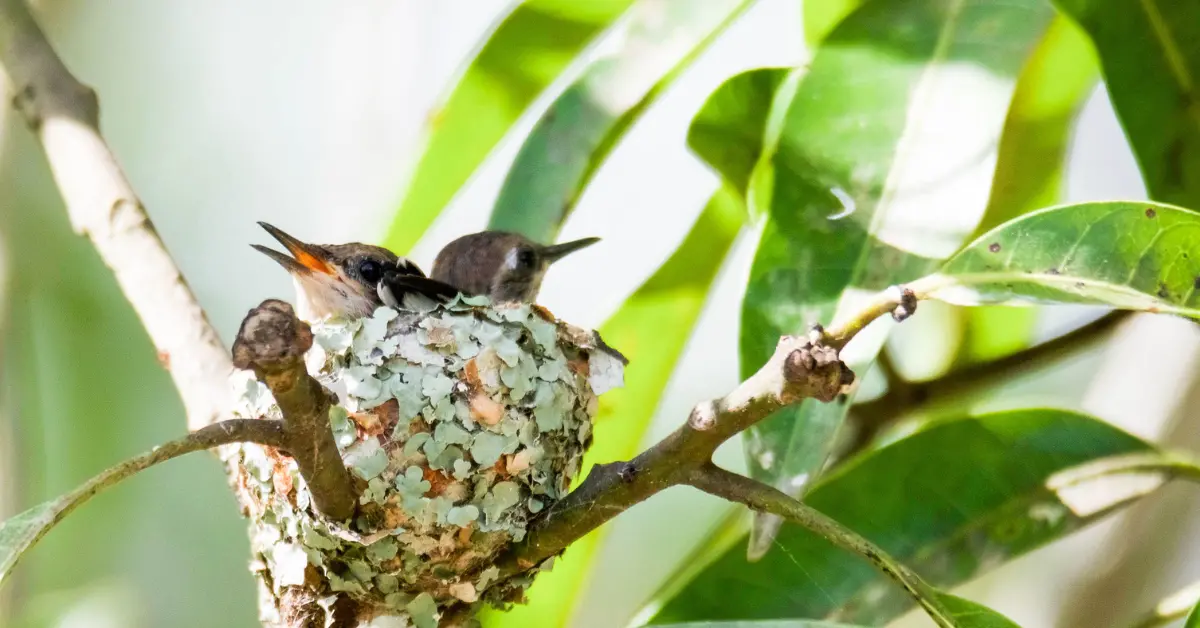
She will incubate her eggs for up to three weeks. Like many birds, chicks are born altricial and helpless, relying solely on the mother to provide food.
Bee Hummingbird chicks will be fed a mixture of soft-bodied insects, such as gnats, mixed with sugary nectar. The combination is produced and stored in the mothers crop, until it is regurgitated to her chicks.
Final Thoughts
The Bee Hummingbird is not only the smallest species of hummingbird, it is the smallest species of bird ever recorded.
Slightly larger than a bumblebee, the Bee Hummingbird can be found throughout the forests of Cuba and its neighboring islands.
Despite their small size, they have an incredibly active lifestyle. Their wings are capable of beating 80 times per second and their heartbeat can reach up to 200 beats per second.
This high metabolism means the Bee Hummingbird must constantly feed. Their primary food source is calorie-rich nectar from flowers.
